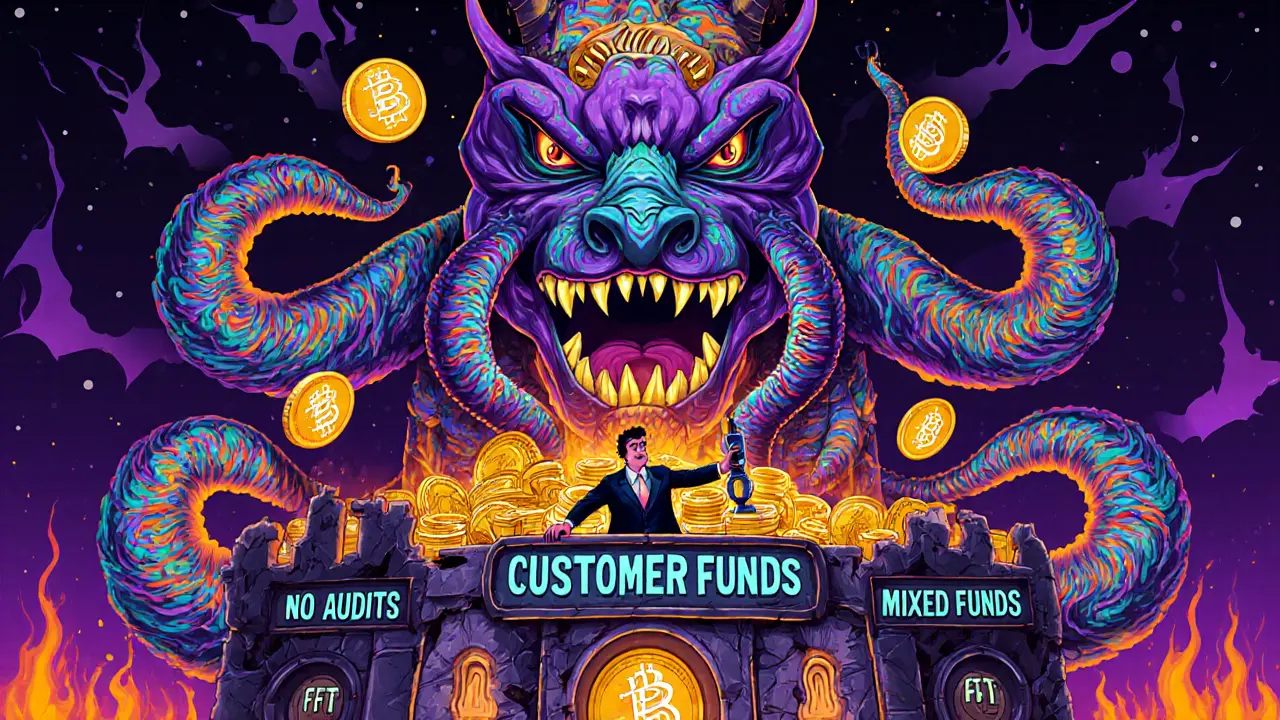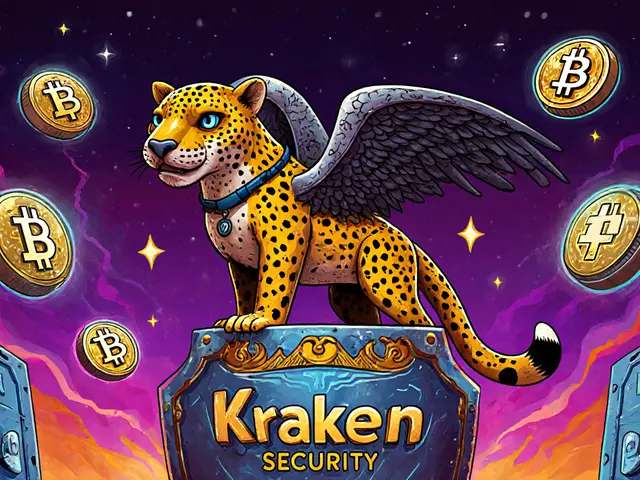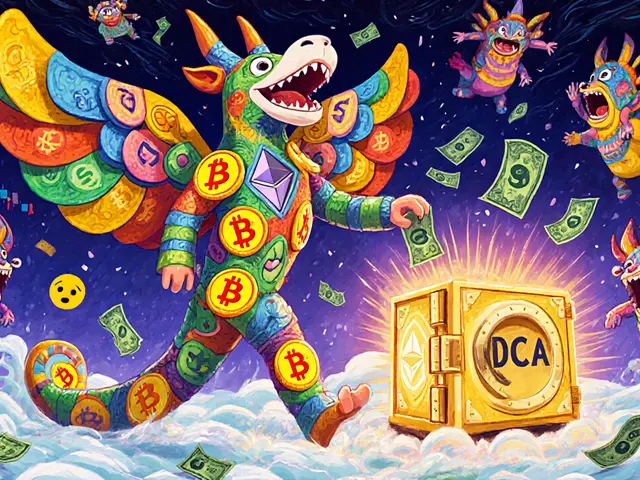FTX wasn’t just another crypto exchange. At its peak, it was the third-largest crypto exchange in the world, handling billions in daily trades and attracting traders with flashy features, low fees, and complex derivatives. But by November 2022, it was gone. No warning. No notice. Just silence. Today, in 2025, FTX doesn’t operate. It doesn’t accept deposits. It doesn’t let you trade. And yet, its shadow still looms over the entire crypto industry.
What FTX Actually Offered Before It Crashed
Before the collapse, FTX was built for serious traders. If you wanted to bet on Bitcoin’s price moving up or down with 10x, 50x, or even 100x leverage, FTX had you covered. It offered 15 perpetual futures contracts and 45 leveraged tokens-tools that let you amplify gains (and losses) without owning the actual crypto. That’s not something Coinbase or Kraken offered back then. FTX was the playground for advanced traders who understood margin, funding rates, and liquidation levels.
Its fee structure was one of the lowest in the industry: 0.02% for makers (those adding liquidity), 0.07% for takers (those removing it). That made it attractive for high-frequency and algorithmic traders. The platform also had something called the Quant Zone, where users could build and share automated trading bots. Some even made money by charging others to use their strategies. It was like an App Store for trading algorithms.
FTX didn’t serve U.S. customers directly. If you were in the United States, you had to use FTX.US-a separate, more restricted platform. That separation was supposed to keep FTX compliant with U.S. regulations. But it turned out the two weren’t as separate as they claimed.
The Hidden Flaws: No Real Safeguards
For all its innovation, FTX had one fatal flaw: it didn’t protect customer money. Unlike regulated exchanges that keep user funds in cold storage and undergo regular audits, FTX mixed customer deposits with its own corporate cash. That money didn’t sit in a vault-it flowed into Alameda Research, a trading firm owned by FTX’s founder, Sam Bankman-Fried.
Alameda used FTX customer funds to make risky bets on crypto tokens, including FTT, the exchange’s own native token. When the market turned and FTT’s price started falling, Alameda couldn’t cover its losses. Customers tried to withdraw money. FTX didn’t have enough to pay them. The whole house of cards collapsed in under 72 hours.
What made it worse? FTX claimed to be secure. It had a “good Help Center,” email support, and even a Telegram channel. But none of that mattered when the underlying financial structure was built on lies. No independent audits. No proof of reserves. No regulatory oversight. Just promises.
How FTX Compared to Other Exchanges
Compared to Kraken or Coinbase, FTX was a specialist. Kraken offered stocks, ETFs, and NFTs. Coinbase had a simple interface for beginners. FTX? It was a trading terminal for pros. It didn’t care about casual users. It wanted volume, leverage, and complexity.
But after FTX fell, competitors moved fast. OKX and Bybit stepped into the derivatives vacuum. They added more leverage options, improved security, and made sure their audits were public. Kraken settled its SEC case in March 2024. Uphold got SOC 2 and ISO 27001 certifications. FTX didn’t even try. It just disappeared.
Today, if you’re looking for a crypto exchange that offers derivatives, you have dozens of options. None of them are FTX. And most of them are far more transparent about how they protect your money.

The Aftermath: Bankruptcy and Recovery
FTX filed for bankruptcy in November 2022. By April 2023, investigators had recovered about $7.3 billion in assets. That sounds like a lot-until you realize customers lost an estimated $18 billion. That’s less than 40% of what was stolen or misused.
Over one million people filed claims in the bankruptcy process. The average claim was over $1,500. Some got back a few cents on the dollar. Others are still waiting. The legal process has dragged on for years, with courtrooms in Delaware and international jurisdictions sorting through FTX’s tangled web of subsidiaries, shell companies, and offshore accounts.
There were talks of relaunching FTX under new ownership. Some investors showed interest. But as of 2025, there’s no active exchange. No website. No app. Just court filings and recovery updates. Most experts agree: even if FTX comes back, it won’t be the same. And most traders won’t trust it again.
Why FTX Still Matters in 2025
FTX didn’t just lose money. It broke trust. It showed the world that even the biggest, flashiest crypto platforms could be scams in disguise. Regulators took notice. The SEC ramped up enforcement. Exchanges now publish proof of reserves. Some even use on-chain audits that anyone can verify.
FTX’s collapse also killed the myth that “crypto doesn’t need regulation.” It proved the opposite: without rules, even the smartest people can be fooled. The industry lost 65% of its derivatives volume in Q4 2022. Traders fled. Investors panicked. It took years to rebuild.
Today, when you hear about a new crypto exchange, ask: Do they publish proof of reserves? Are they audited by a third party? Do they separate customer funds from corporate cash? If the answer is no, you’re playing Russian roulette.

What You Should Do Now
If you used FTX and still haven’t filed a claim, check the official bankruptcy website. You might still be eligible for partial recovery. But don’t expect much. The odds are stacked against you.
If you’re trading crypto today, stick to exchanges with clear track records: Kraken, Coinbase, Binance (where legal), or Bitstamp. Look for platforms that:
- Publicly show proof of reserves (on-chain or through audits)
- Hold customer funds in cold storage
- Are regulated in major jurisdictions (U.S., EU, UK)
- Have no ties to affiliated trading firms
And never, ever trust a platform because it has “low fees” or “high leverage.” Those are red flags, not features. FTX had both-and look where that got people.
FTX’s Legacy: A Warning, Not a Blueprint
FTX was never about technology. It was about deception wrapped in sleek design and influencer marketing. Sam Bankman-Fried didn’t build a better exchange. He built a Ponzi scheme with crypto tokens.
Its downfall taught the industry one brutal lesson: innovation without integrity is dangerous. Leverage without transparency is a trap. Growth without accountability is a countdown.
Today, crypto is more regulated, more cautious, and more mature. That’s not because of good intentions. It’s because FTX burned millions of people-and we’re still picking up the pieces.
Is FTX still operating in 2025?
No, FTX is not operating in 2025. The exchange collapsed in November 2022 and filed for bankruptcy. Its website and apps have been shut down. While there have been discussions about a potential relaunch under new ownership, no active platform exists as of now. All trading, withdrawals, and deposits are impossible.
Can I get my money back from FTX?
Some users have received partial repayments, but most are still waiting. As of 2025, around $7.3 billion has been recovered from FTX’s assets out of $18 billion in customer losses. Repayments are being distributed through the bankruptcy court system, with amounts varying widely depending on claim size and priority. You must have filed a claim during the official window to be eligible. Check the FTX bankruptcy website for updates.
Why did FTX fail when other exchanges survived?
FTX failed because it mixed customer funds with its own corporate money and used them to back risky bets through its sister trading firm, Alameda Research. Other exchanges like Kraken and Coinbase kept customer assets separate, underwent audits, and followed basic financial controls. FTX had no real safeguards. When FTT’s price dropped, there wasn’t enough cash to cover withdrawals-and the whole system collapsed.
Was FTX regulated?
FTX claimed to be compliant, but it wasn’t truly regulated. While FTX.US operated under U.S. state licenses, the main FTX platform was based in the Bahamas and avoided U.S. oversight. It never obtained SEC registration, didn’t publish independent audits, and ignored key anti-money laundering rules. Regulators later called its compliance a facade. The lack of real oversight was a core reason for its failure.
What should I look for in a crypto exchange today?
Look for exchanges that publish regular proof of reserves, use cold storage for customer funds, are regulated in major countries, and don’t have ties to affiliated trading firms. Avoid platforms that promise extremely high leverage or have unclear ownership. Check if they’ve been audited by reputable firms like Grant Thornton or Armanino. Trust transparency over flashy features.
Did FTX’s collapse affect Bitcoin’s price?
Yes. In the week after FTX collapsed, Bitcoin dropped over 30%, falling below $16,000. The crash triggered panic across the entire crypto market. Many investors lost confidence, and institutional money pulled back. Derivatives trading volume dropped 65% in Q4 2022. It took over a year for markets to recover, and trust took even longer.












14 Comments
Man, I still remember scrolling through FTX’s dashboard back in 2021 thinking it was the future. Low fees, insane leverage, those Quant Zone bots-it felt like being handed the keys to a Ferrari with no seatbelt. Now? I just stick to Kraken. No flash, no drama. Just cold storage and public audits. Turns out the safest exchange is the one that doesn’t try to impress you.
Oh, please. You’re all acting like this was some shocking revelation. Of course, they mixed funds-anyone with half a brain knew that. The real crime? The influencers who promoted it like it was gospel. Sam Bankman-Fried didn’t fool the market-he fooled the credulous. And now? We’re all supposed to feel sorry for the people who thought ‘high leverage’ meant ‘easy money’? No. They got played. And they deserved to be.
I just want to say-this post really helped me understand what went wrong. I lost money on FTX too, and I didn’t even know how to ask the right questions back then. I thought ‘low fees’ meant ‘safe.’ I didn’t know what proof of reserves even was. Thank you for explaining it so clearly. I’ve since switched to Bitstamp, and honestly? Their interface is boring, but I sleep better at night.
This is all a government and Wall Street psyop. FTX was shut down because it threatened the traditional banking system. The $7.3 billion recovered? A lie. The real assets were moved to offshore crypto wallets controlled by the Fed. The bankruptcy court is a theater. The real victims are those who used crypto to escape the fiat system-and now they’re being punished for it.
So let me get this straight: FTX collapsed because they used customer money to gamble? Shocking. Next you’ll tell me that a casino that lets you bet your rent money on blackjack is a bad idea. What’s the real crime here? That they were too good at their job? Or that they didn’t have enough PR people to spin it as ‘risk management’?
FTX was never the problem people are making it out to be. The real issue is that people trusted centralized platforms at all. If you didn’t hold your own keys you were asking for trouble. Kraken and Coinbase are just as centralized. They just have better lawyers. The lesson isn’t about regulation it’s about self custody. Duh.
I think this post is so important because it reminds us that technology without ethics is just a tool for harm. I used to think crypto was about freedom-but now I see it’s about responsibility. I’ve started sharing this with my friends who are still chasing 100x leveraged tokens. I just say: ‘Would you do this with your mortgage?’ And they pause. That’s the real win.
Been trading since 2017. Seen a lot of crashes. FTX was brutal but it cleaned house. Now I only use exchanges that show their wallet balances on-chain. No fluff. No promises. Just math. And yeah, the fees are a little higher. But I’d rather pay $5 extra than lose $5000.
Reading this brought back a lot of memories. I had a friend who lost everything on FTX. She didn’t even know what leverage was. She just saw a YouTube ad saying ‘Earn 50% monthly.’ I wish someone had explained this to her before she invested. Thanks for writing this. It’s the kind of thing we need more of.
THIS IS WHY I HATE CRYPTO. EVERY SINGLE TIME SOMEONE GETS RICH ON A SCAM AND THEN EVERYONE ELSE GETS BURNED. SAM BANKMAN-FRIED WAS A MONSTER AND THE WHOLE INDUSTRY IS STILL COVERING FOR HIM. WHY AREN’T WE IN THE STREETS? WHY AREN’T WE DEMANDING JAIL TIME? WHY DO WE STILL TALK ABOUT ‘LEVERAGE’ LIKE IT’S A FEATURE AND NOT A TRAP?
People who lost money on FTX should be ashamed. You didn’t do your research. You trusted a guy with a hoodie and a TED Talk. Now you’re crying about it? I told my cousin not to touch FTX. She didn’t listen. Now she’s begging for ‘recovery funds.’ If you’re not self-custodial, you’re not a crypto user-you’re a tourist.
Honestly? I think FTX’s legacy is that it made us all a little smarter. I used to think cool UIs and influencer shoutouts meant safety. Now I check the audit reports before I even log in. It’s boring. It’s slow. But it’s the only way to play this game without getting eaten. Thanks for the reminder.
Recovery rate under 40%? That’s not a failure-that’s a win if you’re the one running the scam. FTX was never meant to survive. It was a liquidity pump disguised as an exchange. The real victims? The people who didn’t get to cash out before the rug pull. Everyone else? Just spectators with a side of moral outrage.
Yeah, I saw your comment about self-custody. Valid point. But here’s the thing-most people don’t know how to manage private keys. They’ll lose them. Or get phished. Or forget the passphrase. Not everyone can be a node operator. So we need better custodians, not just ‘do it yourself’ preaching. FTX failed because it lied. Good custodians don’t lie. That’s the baseline.